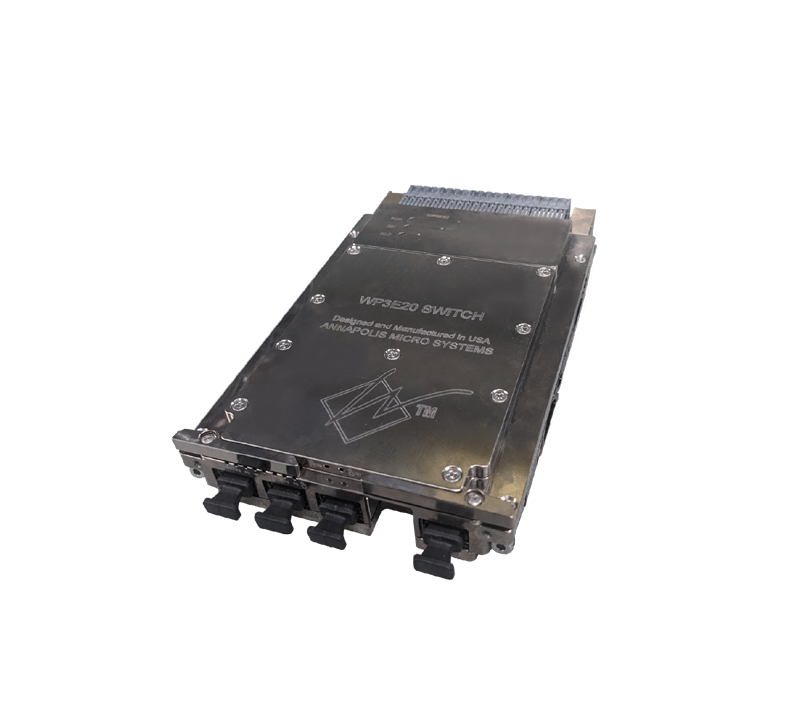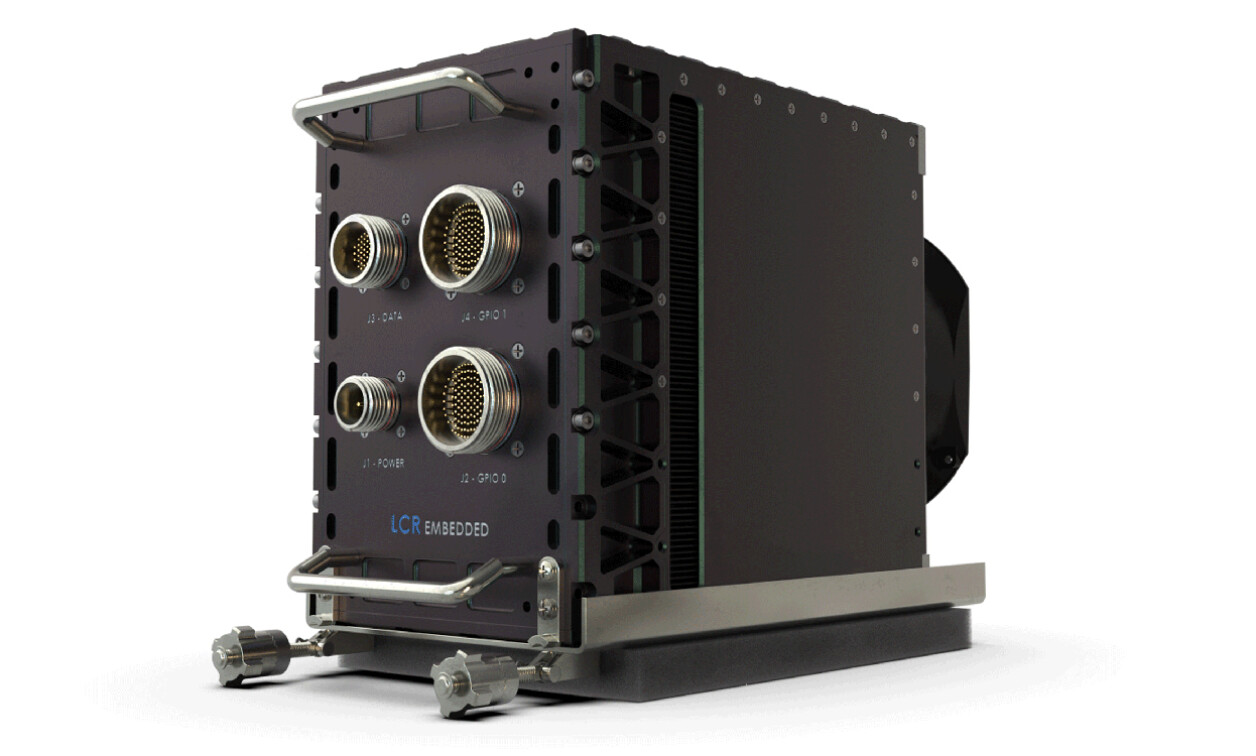The embedded computing industry serves markets where input and output for analog and radio frequency (RF) signals is needed as a standardized rear-panel connector. Prior to the development of VITA 67, there were no backplane standards that provided coaxial connectivity for RF, video, and other analog signals. Providers of equipment either used front panel connectors or customized coaxial backplane implementations for analog, video, and RF signals. The performance capability of VPX makes it a great platform for processing RF signals, so getting this input/output to a VPX module is extremely important.
The motivation for coaxial connectivity on the backplane includes:
- Quick replacement of modules providing lower Mean-Time-To-Repair (MTTR)
- Limited front panel real estate and access
- Conduction cooled VPX modules require that there be no front panel IO
- Improved modularity and scalability of complex architectures
- Coaxial interconnects in modules can significantly improve isolation from interference and noise.
VITA 67.0 VPX: Coaxial Interconnect – Base Standard
The VITA 67 base standard (See Table 1) was written to enable coaxial RF/analog interconnects to coexist on the backplane with most VPX standards. For instance, the rich capability of VPX serial interconnects can be integrated with the VITA 67 standard, including: Gigabit Ethernet, 10 Gb Ethernet, Fibre Channel, InfiniBand, Serial RapidIO, PCI Express, and others. In many implementations of this standard, the maximum serial bandwidth of a VPX switched fabric is not limited, since the coaxial connector position on the backplane is strategically placed to enable the full capability of the defined VPX VITA 46 dot standards. In the 3U implementation, the coaxial connector uses the same backplane connector positions as the VITA 66 Fiber Optic Interconnect standard.
The significant differences between the ANSI/VITA 46 base standard and the ANSI/VITA 67 base standard are:
- The VITA 67 standard enables coaxial interface connectors to be used in place of the differential digital connectors in the VITA 46 P2 through P6 positions
- The VITA 67 standard provides a new method for reference designation of the backplane connectors, which enables the physical connectors to cross the standard P1 through P6 connector boundaries. This is useful when a coaxial module is not exactly the same size as a standard RTM connector.
The VITA 67 base standard describes the rules, recommendations, permission, and definitions as a framework from which VITA 67 dot standard might be created in a manner that is synergistic with VPX architectures.
Figure 1 illustrates the document structure for VITA 67. Each new variant of coaxial configuration is a new VITA 67 dot standard. The interoperability of this standard is with respect to the slot modules interconnect to the backplane and PCB footprint. Thus, only changes of a connector that impacts this interoperability require a new VITA 67 dot standard. This is shown in Figure 1, where the 4 position and the 8 position coaxial connector each have a unique dot standard.
The VITA 67 base and dot standards do not specify slot profiles or chassis profiles. Information on standard slot profiles and backplane configurations including VITA 67 modules are included in ANSI/VITA 65 OpenVPX. Updates to the ANSI/VITA 65 OpenVPX standard will be made on a regular basis with new profiles that represent the industry’s effort to make interoperable products with VITA 67 and other VPX standards.
VITA 67.1 VPX: Coaxial Interconnect, 3U, 4 Position SMPM Configuration
The VITA 67.1 standard defines a 3U VPX compliant analog connector module containing up to 4 SMPM contacts.
VITA 67.2 VPX: Coaxial Interconnect, 6U, 8 Position SMPM Configuration
The VITA 67.2 standard defines a 6U VPX compliant analog connector module containing up to 8 SMPM contacts that can be implemented in locations P2/J2 through P6/J6.
VITA 67.3 VPX: Coaxial Interconnect, 6U, 4 Position SMPM Configuration
The VITA 67.3 standard is the latest to receive ANSI recognition. The primary goal of this standard is to build upon the framework laid out in 67.0, 67.1 and 67.2 for detailing blind mate analog interfaces. VITA 67.1 and .2 only allow for a cable termination on the Plug-In Module’s contacts. Routing cables to another connector on the Plug-In Module can be difficult and unnecessary. The driving objective is to allow fixed contacts on the Plug-In Module and spring-loaded contact action on the backplane. This functionality allows for alternate packaging of the modules, potentially eliminating all cables on the Plug-In Module.
As the industry has progressed since the initial VITA 67 standards, the need for higher contact densities has arisen. In addition to the physical space reductions by eliminating cable management, the VITA 67.3 backplane modules (Figure 2) further increase space efficiency by taking advantage of a full 1.00” slot pitch. The contact position within the housings are no longer constrained to the fixed 2 x 2 and 2 x 4 arrays for greate flexibility up to 12 SMPM contacts.
The VITA 67.3 standard was written with future expansion and backwards compatibility in mind. The document structure defines the contacts in Section 3, modules in Section 4, and the integration in Section 5. This supports future growth of the standard. The initial contacts available are SMPM as described in Section 3.1 SMPM Contacts, but there is a framework to incorporate other interfaces in 3.2, 3.3, etc. … to support market needs for higher connector density as an example. The module rules within Section 4 allow for application specific implementations, and when combined with Section 5, ensure interoperability.
The modules within “Appendix A: Compliant Modules” are designed with overarching VPX compliance in mind and are included in new VITA 65 OpenVPX slot profiles. These slot profiles support an ever-evolving ecosystem without needing to alter the backplane. Payload Plug-In Modules could be replaced as new capabilities, integrated within a slot, require additional contacts with different arrangements. The upgrade is as simple as replacing the existing backplane module with the vender provided replacement.
The final vision this working group has is the integration of RF and optical contacts within a single module. This motivation is supported in optimizing the size, weight, and power (SWaP) of the VPX ecosystem. This is of importance in 3U applications where backplane I/O is a limited resource. Sharing the module makes the best use of the available space while providing the flexibility designers require.






